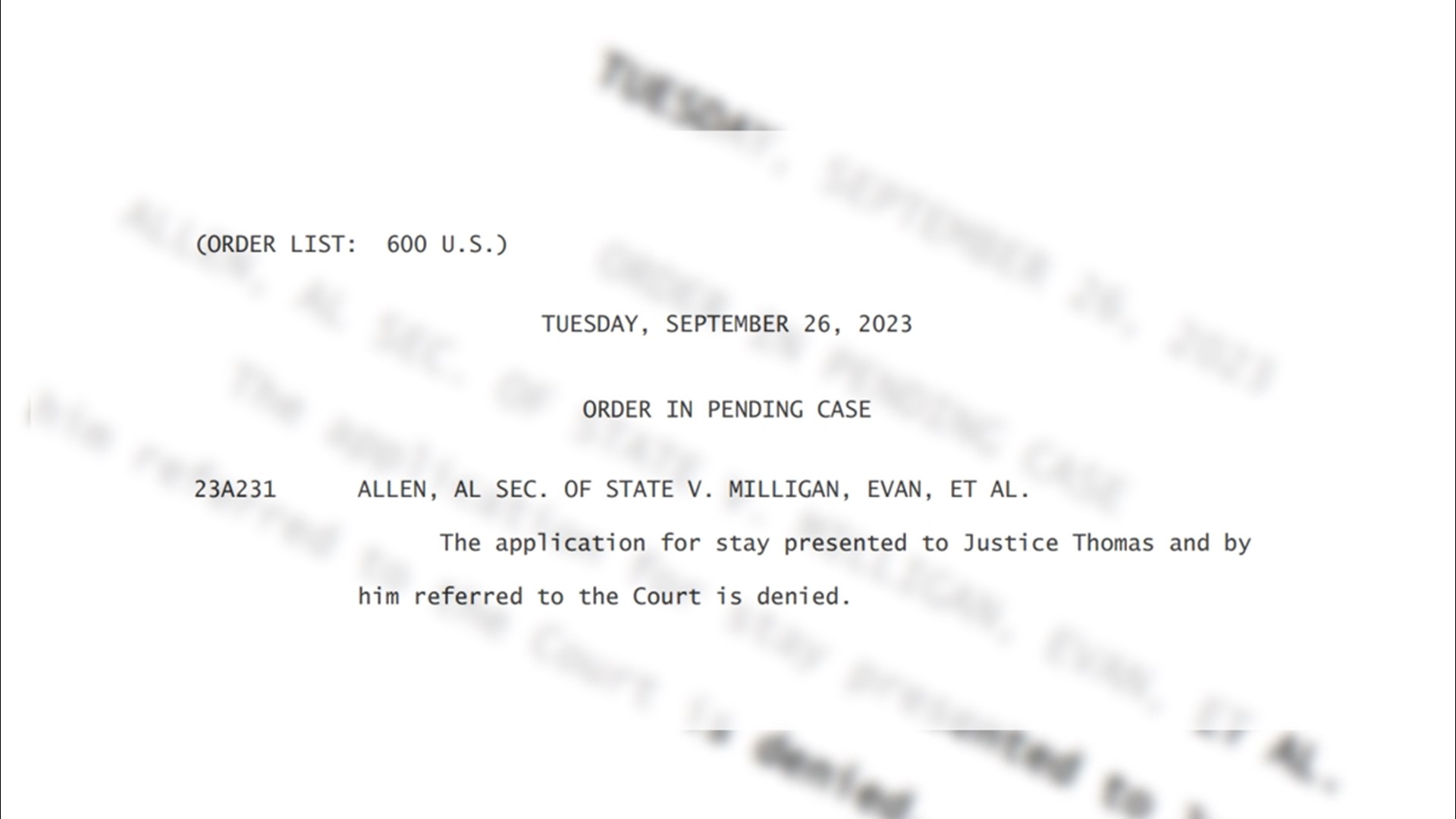WASHINGTON — The Supreme Court on Tuesday allowed the drawing of a new Alabama congressional map with greater representation for Black voters to proceed, rejecting the state's plea to retain Republican-drawn lines that were struck down by a lower court.
In refusing to intervene, the justices, without any noted dissent, allowed a court-appointed special master's work to continue. On Monday, he submitted three proposals that would create a second congressional district where Black voters comprise a majority of the voting age population or close to it.
A second district with a Democratic-leaning Black majority could send another Democrat to Congress at a time when Republicans hold a razor-thin majority in the House of Representatives. Federal lawsuits over state and congressional districts also are pending in Georgia, Louisiana and Texas.
Alabama lost its Supreme Court case in June in which its congressional map with just one majority Black district out of seven seats was found to dilute the voting power of the state’s Black residents, who make up more than a quarter of Alabama’s population.
A three-judge court also blocked the use of districts drawn by the state’s Republican-dominated legislature in response to the high court ruling. The judges said Alabama lawmakers deliberately defied their directive to create a second district where Black voters could influence or determine the outcome.
Stark racial divisions characterize voting in Alabama. Black voters overwhelmingly favor Democratic candidates, and white Alabamians prefer Republicans.
The state had wanted to use the newly drawn districts while it appeals the lower-court ruling to the Supreme Court.
Though Alabama lost its case in June by a 5-4 vote, the state leaned heavily on its hope of persuading one member of that slim majority, Justice Brett Kavanaugh, to essentially switch his vote.
The state’s court filing repeatedly cited a separate opinion Kavanaugh wrote in June that suggested he could be open to the state’s arguments in the right case. Kavanaugh, borrowing from Justice Clarence Thomas’ dissenting opinion, wrote that even if race-based redistricting was allowed under the Voting Rights Act for a period of time, that “the authority to conduct race-based redistricting cannot extend indefinitely into the future.”
FOX54 News obtained the following statements from Alabama officials:
Congressman Dale Strong (R-AL 05): “As I always say, I don’t have a district. I represent the great people of North Alabama, and I stand ready to support them in Washington no matter where the lines are drawn. I’ve made it my mission in my first 9 months to travel the Tennessee Valley far and wide— and look forward to getting to know the folks in Lawrence County better than I already do.”
Congressman Robert Aderholt (R-AL 04): "As I have said previously, the ruling seemed to be a case where the Court was speaking out of both sides of its mouth. They have said you can’t use race to draw district lines, but then said you must use race to draw district lines. Regardless, this seems to be the reality we are facing. While I’m sorry that Etowah and Lawrence counties are not technically in the 4th congressional district, my door is always open to the people of both counties. I welcome Blount County back into the Fourth District and welcome the western portion of Lauderdale as a new part of the Fourth Congressional District.”
Senator Tommy Tuberville (R-AL): "Senator Tuberville is continuing to monitor the situation. He wants Alabama to have fair representation in the House."

